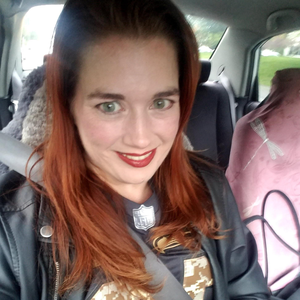Your comments
I've be looking for this EXACTLY. I also use the "broken" button to zero out a total,, then add notes, but it's a very clunky work around that still leaves items sold in my collection. I wish I could sell everything through 1 platform, but the reality is that items some items we list still move faster on other platforms. A sold button with a price option would allow me to track if I gifted or sold items and would help me keep better track of actual investment vs value.
With new marketplaces constantly available and eBay no longer being where most serious collector sell, can we add at least one more verified seller for reference? So far, Mercari has had listings and sales for most items in my collection and wishlist that are missing prices or have obviously bad pricing data, IE: Skylander's Double Trouble, which is definitely not worth $60 loose. More reference points would greatly help the system correct these errors by reducing the effect of 1 bad price on an average. We could further reduce the error by building a step in your calculator that dismisses the highest and lowest price before computing, granted there have been enough sales to dump the extremes to find a true average.
I buy in lots, too, and can see where this would be a benefit, but offer a different idea that ties back to a larger impact solution. Currently, I add most items at $0, list the lot price with all items in notes, then copy & paste the same note in each entry. When done, the lot price will be entered in the top priced (or only) game console, accessory, or game, based on what's in the lot. The problem I run into is running out of space in the notes before everything is listed.
Two things could help this. Both would be nice, but either one would help:
1. More space in notes
2. The option to group or tag items creating smaller "collections" or a common tag that I can search or filter.
This goes hand in hand with my comments on the subjects of adding purchase date & serial numbers. If we had the ability to add SNs, we could then group systems as we add or replace items such as controllers, expansion packs, Rumble Paks, etc, for management both physically and digitally.
BENEFITS:
1. Physical grouping - grouping by SN in the app helps us to track and identify which items go together and who "owns" the games without having to physically mark them. This is especially helpful when when we have kids with their own systems (2 of my kids have an Xbox 360 and ALL of them have a DS, so we have a lot of duplicates) that really DO matter if they're tracked to prevent arguments.
2. Digital grouping - Our invested total per system should be expected to change as long as we continue to use it. Tracking the investment over time helps us to better understand our current investments and budget for and justify future releases. For example, If you know of an upcoming launch date, you can sort and view the history of your current system to reduce spending or even reverse it by selling lesser played games and accessories to reinvest in the upgrade.
3. Tracking total investments - When we add or replace accessories, we alter both the total investment and the current value of a system. This can be accurately captured in your app by adding serial numbers and a way to group them. First, add your new item to your collection, then add it to system's group. If this is an addition, you're done. If it's replacement a broken or sold item, see add'l steps below.
. A . Replacing sold item: Open the item and mark it sold (unless the system does that for you... I'm still new to selling on this site, so I haven't crossed that bridge yet.) This should remove it from your inventory and update your investment and profit totals automatically.
. B . Replacing broken/damaged items: Open item, then select "broken" from the checklist near thebtop of the page. This will change the suggested value to $0 while keeping the invested total. That's all you HAVE to do to keep these numbers straight, but I take a the following add'l steps. Open notes, then at the very beginning, type *BROKEN*. This will now appear in the notes preview to see at a glance. Also in Notes, I record what was wrong, the disposition (repair, donate, sell for parts, or throw away), and SN of the replacement.
Customer support service by UserEcho


A search for N64 conses in PC will only yield 1 response, indicating either all N64 consoles are created equal, therefore Nintendo chose to issue only 1 UPC for ALL N64 consoles, thereby also creating price equality across all variations, including limited editions, or this is an aggregoous oversight and a pretty large task for any 1 person. A quick Google search returned the following, all of which have unique SNs, prices, & descriptions
1. N64 w/controller, tested
. UPC 045496340247
2. N64 console, Pikachu Bundle
. UPC 045496719227
. 3. N64, model 31120G9G.
While I have access to add and edit, I still wouldn't in this case and several other similar circumstanceshave absolutely ZERO confidence in the accuracy of this data w/o validation from at least 1 additional source.. From the looks of the previous reply from sales, you're not in a much better position. I have a possibly GREAT idea for resolution that am listing in a new feed as the proposed solution would be universally helpful across all platforms. Hopefully admin will agree and can close or edit this feed to point to my suggestion(s) once it is posted.